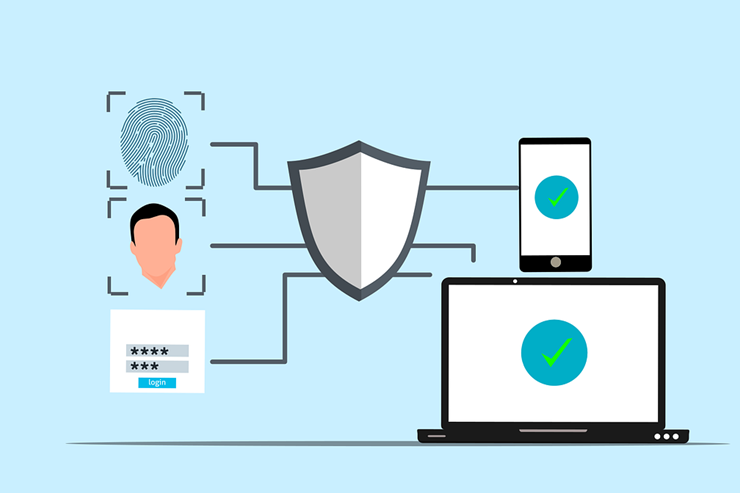Complete Guide to Cyber Insurance Coverage: Inclusions, Exclusions & Top Tips

Cyber threats are a daily reality for small businesses navigating an increasingly digital world; they are not merely an abstract concern. Financial and reputational harm can result from ransomware attacks, phishing scams, or unintentional data leaks. In order to reduce the risks, more businesses are using cyber insurance.
Not every cyber insurance plan is made equally. Many business owners think their policy covers them, but they discover (too late) that it has significant gaps. We'll explain exactly what is and isn't covered in this blog post, along with how to pick the best cyber insurance plan for your company.
Why Is Cyber Insurance More Crucial Than Ever?
Hackers can target you even if you're not a big company. Small businesses are actually becoming more and more vulnerable. The 2023 IBM Cost of a Data Breach Report states that small and mid-sized businesses are currently the target of 43% of all cyberattacks. A breach can have crippling financial consequences; on average, smaller businesses must pay $2.98 million. For any expanding business, that could be a serious setback.
Additionally, consumers now expect businesses to protect their personal information, and regulators are stepping up their efforts to combat data privacy violations. A strong cyber insurance policy is an essential safety net because it ensures compliance with regulations such as the CCPA, GDPR, and HIPAA in addition to assisting with breach expenses.
What Cyber Insurance Typically Covers
Protecting your company from the financial consequences of a cyber incident requires a comprehensive cyber insurance policy. First-party coverage and third-party liability coverage are its two primary coverage categories. Depending on the particular requirements of your company and the kind of incident you're dealing with, both offer various types of protection. We describe each kind and the particular coverages they usually offer below.
First-Party Coverage
First-party coverage is intended to directly defend your company in the event of a breach or cyberattack. This kind of coverage aids in your company's financial recovery from the attack's immediate expenses.
Breach Response Costs
One of the first areas that first-party coverage addresses is the cost of managing a breach. After a cyberattack, you'll likely need to:
· Investigate how the breach happened and what was affected
· Get legal advice to stay compliant with laws and reporting rules
· Inform any customers whose data was exposed
· Offer credit monitoring if personal details were stolen
Business Interruption
Cyberattacks that interfere with business operations or bring down networks can cost a company a lot of money. By covering lost revenue during downtime, business interruption insurance lessens the financial impact. It frees you from worrying about daily cash flow so you can concentrate on recovering.
Cyber Extortion and Ransomware
Ransomware attacks are on the rise, and they can paralyze your business by locking up essential data. Cyber extortion coverage is designed to help businesses navigate these situations by covering:
· The cost of paying a ransom to cyber attackers.
· Hiring of professionals to negotiate with hackers to lower the ransom and recover data.
· The costs to restore access to files that were encrypted in the attack.
Data Restoration
Important company data may be lost or damaged as a result of a significant cyber incident. Whether your company uses backup systems or a data recovery service, data restoration coverage guarantees that data can be recovered. This keeps your business operating smoothly and reduces disruption.
Reputation Management
In the aftermath of a cyberattack, it's crucial to rebuild the trust of customers, partners, and investors. Many policies now include reputation management as part of their coverage. This often includes:
• Hiring Public Relations (PR firms) to manage crisis communication, create statements, and mitigate any potential damage to your business's reputation.
• Guidance on how to communicate with affected customers and stakeholders to maintain transparency.
Third-Party Liability Coverage
Third-party liability insurance shields your company from lawsuits brought by outside parties impacted by your cyber incident, including partners, suppliers, and consumers. This coverage protects you financially and legally in the event that a breach or attack affects people who are not affiliated with your business.
Privacy Liability
This coverage protects your business if sensitive customer data is lost, stolen, or exposed in a breach. It typically includes:
· Coverage for legal costs if you're sued for mishandling personal data.
· It may also cover costs if a third party suffers losses due to your data breach.
Regulatory Defense
Regulatory agencies like the Federal Trade Commission (FTC) and other industry-specific regulators frequently monitor cyber incidents. Regulatory defense coverage can assist in the following situations if your company is being investigated or fined for breaking data protection laws:
· Coverage may help pay for fines or penalties imposed by a regulator for non-compliance.
· Mitigating the costs of defending your business against regulatory actions, which can be considerable.
Media Liability
Media liability coverage protects you in the event that your company is the target of a cyberattack that exposes sensitive information (like trade secrets), causes online defamation, or violates copyright. It includes:
· Defamation Claims - If a data breach leads to defamatory statements or online reputational damage, this policy helps cover the legal cost of defending the claims.
· Infringement Cases - If a cyberattack leads to intellectual property violations, media liability coverage provides the financial resources to · address infringement claims.
Defense and Settlement Costs
If your company is sued following a data breach or cyberattack, third-party liability coverage can help cover legal defense costs. This can include:
· Paying for attorney fees in a data breach lawsuit.
· Covering settlement or judgment costs if your company is found liable.
Optional Riders and Custom Coverage
Businesses can frequently add additional coverage to cyber insurance policies according to their unique needs or threats. These add-on riders can provide more specialized protection for particular risks that your company may encounter.
Social Engineering Fraud
Social engineering fraud, which includes phishing attacks and other dishonest strategies intended to fool staff members into disclosing private information, sending money, or granting access to internal systems, is one of the most prevalent forms of cyber fraud that occurs nowadays. Coverage of social engineering fraud helps guard against:
· Financial losses if an employee is tricked by a phishing scam.
· Financial losses through fraudulent transfers by attackers.
Hardware "Bricking"
Some cyberattacks physically harm company equipment, making it unusable; this is referred to as "bricking." The expenses of replacing or fixing devices that have been irreparably harmed by a cyberattack are covered by this rider.
Technology Errors and Omissions (E&O)
This type of coverage is especially important for technology service providers, such as IT firms or software developers. Technology E&O protects businesses against claims resulting from errors or failures in the technology they provide.
What Cyber Insurance Often Doesn't Cover
Knowing what a cyber insurance policy does not cover is as crucial as understanding what it does. Small business owners frequently overlook these common gaps, which exposes them to certain risks.
Negligence and Poor Cyber Hygiene
Strict provisions pertaining to the cybersecurity status of your company are found in many insurance policies. Your claim might be rejected if your business doesn't follow fundamental cybersecurity procedures like using firewalls, Multi-Factor Authentication (MFA), or updating software.
Pro Tip: Insurers increasingly require proof of good cyber hygiene before issuing a policy. Be prepared to show that you've conducted employee training, vulnerability testing, and other proactive security measures.
Known or Ongoing Incidents
Cyber incidents that were underway prior to the activation of your policy are not covered by cyber insurance. For instance, the insurer will not cover damages resulting from a data breach or attack that started prior to the start of your coverage. Similarly, your insurer might reject the claim if you were aware of a vulnerability but did nothing to address it.
Pro Tip: Always ensure your systems are secure before purchasing insurance, and immediately address any known vulnerabilities.
Insider Threats
While many cyber insurance policies may offer PR crisis management services, they usually don't cover the long-term reputational damage or future business losses that can result from a cyberattack. The fallout from a breach, such as lost customers or declining sales due to trust issues, often falls outside the realm of coverage.
Pro Tip: If your business is especially concerned about brand reputation, consider investing in additional coverage or crisis management services. Reputational harm can have far-reaching consequences that extend well beyond the immediate financial losses of an attack.
How to Choose the Right Cyber Insurance Policy
Assess Your Business Risk
Start by evaluating your exposure:
· What types of data do you store? Customer, financial, and health data, all require different levels of protection.
· How reliant are you on digital tools or cloud platforms? If your business is heavily dependent on technology, you may need more extensive coverage for system failures or data breaches.
· Do third-party vendors have access to your systems? Vendors can be a potential weak point. Ensure they're covered under your policy as well.
Your answers will highlight the areas that need the most protection
Ask the Right Questions
Before signing a policy, ask:
· Does this cover ransomware and social engineering fraud? These are growing threats that many businesses face, so it's crucial to have · specific coverage for these attacks.
· Are legal fees and regulatory penalties included? If your business faces a legal battle or must pay fines for a breach, you'll want coverage · for these costly expenses.
· What's excluded and when? Understand the fine print to avoid surprises if you file a claim.
Get a Second Opinion
Don't go it alone. Collaborate with a cybersecurity specialist or broker who is knowledgeable about the legal and technical facets of cyber risk. They will guide you through the intricacies of the policy wording and point out any coverage gaps. Having an expert on your side can help you make the best choice for your company and guarantee that you are sufficiently protected.
Consider the Coverage Limits and Deductibles
Policies for cyber insurance have set deductibles and coverage limits. Make sure the coverage limit corresponds to the possible risks facing your company. Make sure your policy limit is appropriate, for instance, if a data breach could cost your company millions of dollars. Examine the deductible amounts as well; these are the expenses you must pay out of pocket prior to your insurance taking effect. In the event of an incident, pick a deductible that your company can afford.
Review Policy Renewal Terms and Adjustments
This is paragraph text. Click it or hit the Manage Text button to change the font, color, size, format, and more. To set up site-wide paragraph and title styles, go to Site Theme.










